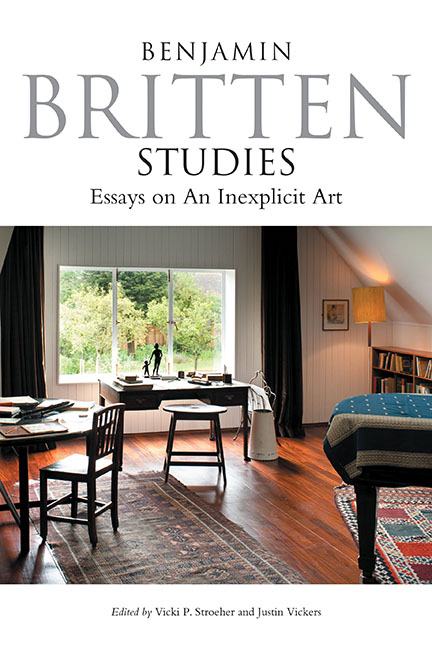Book contents
- Frontmatter
- Dedication
- Epigraph
- Contents
- List of Illustrations
- List of Musical Examples
- List of Tables
- Notes on Contributors
- Acknowledgements
- Bibliographic and General Abbreviations
- Editors’ Preface
- Introduction: Writing About Britten
- Part I Identity: Exile and Return
- Part II Britten and Intimacy
- Part III Britten and His Craft
- 8 “Take These Tokens That You May Feel Us Near”: Remembrance and Renewed Citizenship in Britten's Gloriana
- 9 Traces of Nō: Modularity and Saturation in The Burning Fiery Furnace and The Prodigal Son
- 10 Britten and the Augmented Sixth
- 11 Quickenings of the Heart: Notes on Rhythm and Tempo in Britten
- Part IV Britten and Matters of Practicality
- Conclusion and Epilogue
- Works Cited
- Index
8 - “Take These Tokens That You May Feel Us Near”: Remembrance and Renewed Citizenship in Britten's Gloriana
from Part III - Britten and His Craft
Published online by Cambridge University Press: 25 October 2017
- Frontmatter
- Dedication
- Epigraph
- Contents
- List of Illustrations
- List of Musical Examples
- List of Tables
- Notes on Contributors
- Acknowledgements
- Bibliographic and General Abbreviations
- Editors’ Preface
- Introduction: Writing About Britten
- Part I Identity: Exile and Return
- Part II Britten and Intimacy
- Part III Britten and His Craft
- 8 “Take These Tokens That You May Feel Us Near”: Remembrance and Renewed Citizenship in Britten's Gloriana
- 9 Traces of Nō: Modularity and Saturation in The Burning Fiery Furnace and The Prodigal Son
- 10 Britten and the Augmented Sixth
- 11 Quickenings of the Heart: Notes on Rhythm and Tempo in Britten
- Part IV Britten and Matters of Practicality
- Conclusion and Epilogue
- Works Cited
- Index
Summary
In his review of the 2012 Covent Garden production of Benjamin Britten's coronation opera Gloriana, Rupert Christiansen described the stunning “coup de théatre” that was the final scene of the production as such: “Elizabeth signs Essex's death warrant and then becomes mythically transfigured as reality melts into phantasmagoria. Charged with knowledge of her own imminent and ineluctable mortality, she passes through a parade of pivotal moments of her royal career, presented cinematically, like a newsreel.” Although this production famously foregrounded the historical process and multiple “levels” of pastness, the score itself stipulates that the Queen be visited by a phantom of herself at this moment, and that she be alone, with “time and place […] becoming less and less important to her.” Britten seems to have imagined the scene as one that depicts the act of remembering – the Queen's ghostly future self stepping outside her present self and effectively rendering what was the present past; to put it otherwise, we hear and see the passing of time in this moment. But while this final scene is powerful, it is not unique in the work: in fact, it confirms the trope of remembrance that structures the rest of the opera, rendering the work a unique site of memory where the individual and collective intersect. In this opera, Britten uses music not only to appeal to memory, but to construct it. Britten's score might thus be considered a simulacrum of memory, allowing for various facets of operatic subjectivity to manipulate both the characters in the work and those in the audience, thereby restructuring relationships and historical identities in the process. Indeed, in its recent performances and recordings, the opera has spoken quite powerfully to audiences in Britten's second century; Robert Hewison pointed out that “with the perspective of history, we can now see that Gloriana was a more prescient work than was realized on that terrible first night on the 8 June 1953.”
Gloriana is indeed regarded, generally, to be the least successful of Britten's operas.
- Type
- Chapter
- Information
- Benjamin Britten Studies: Essays on An Inexplicit Art , pp. 236 - 258Publisher: Boydell & BrewerPrint publication year: 2017

